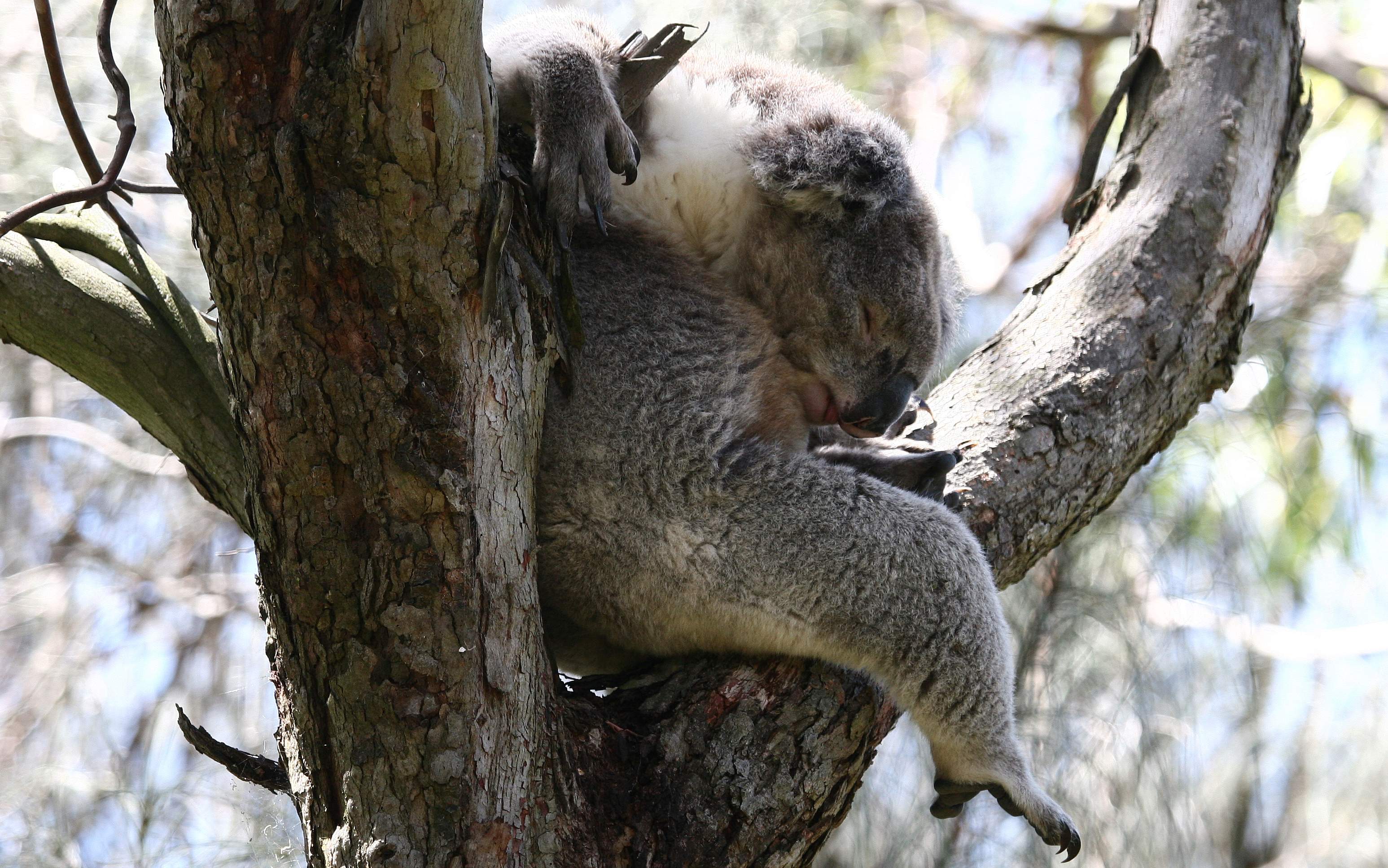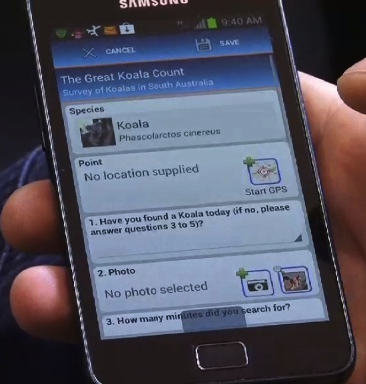Ever spotted a koala when you’re not at the zoo?
By Lucy Mercer-Mapstone
At coffee with a friend recently we chatted about our latest smartphone app discovery while tweeting about the conversation, and sharing the link via Facebook. It occurred to me that I do a lot more with my phone these days than makes calls and send texts. Thanks to these nifty little tools we can identify and purchase the song playing in the café, edit the photo we just took, find out exactly what time our bus will arrive, and practically anything else in between.
Count those little furry bears with our nifty app
With worldwide smartphone sales estimated to reach 686 million by the end of 2012, it seems that many people are embracing the new technology. As the technological capability progresses so too does the functionality and variety of apps that they support. And science is getting on board.
A smartphone app released this week is turning citizens into scientists. Citizen science is becoming an increasingly popular phenomenon and with the technology so easily accessible, why not? All you need is a smartphone, a keen eye, and a case of the curiosities.
The app has been developed by us and the Atlas of Living Australia to support South Australia’s Great Koala Count, which will take place on Wednesday, 28th November. The day will see South Australians don their citizen science hats and go forth to collect a count of Australia’s most loveable marsupial – the koala. The project will utilise the manpower of society and smartphone technology to help scientists understand a bit more about our favourite Australian mascot.
Our research scientist, Dr Andrew Baker, has been involved in developing the app and believes that it is a really exciting new way of doing science. “To ensure reliable results and accurate conclusions, we need a sufficient amount of data for our research,” he said.
“The more data we have, the more reliable our results. But scientists, of course, can’t be everywhere at once. By using apps like this, we can get around this problem as it means that we’ve got lots of people on the ground taking verifiable observations at lots of locations in a short period of time.”
And the app makes taking these observations a breeze. Snap a photo, record your observations, the phone’s inbuilt GPS records your specific location and, hey presto, you’ve got your first data point. The team even made a video to demonstrate the app in action:
The applications for this technology and software development are endless, and the practicality of using phones as portable data recorders points to a strong future in this field. They remove the need to transfer recordings from notebooks to computers, which is time-consuming and increases the risk of error. They provide verifiable data through photos and GPS recordings. And perhaps best of all, they allow everyone from kindergarten kids to retired professors of ecology to get involved in scientific research about the natural world around us.
If you’d like to get involved head to www.abc.net.au/adelaide/operation/
The Great Koala Count is a joint initiative of the Barbara Hardy Institute of the University of South Australia, ABC Local Radio SA, the SA Department of Environment, Water and Natural Resources, the Adelaide and Mt Lofty Ranges Natural Resources Management Board, CSIRO and the Atlas of Living Australia.



